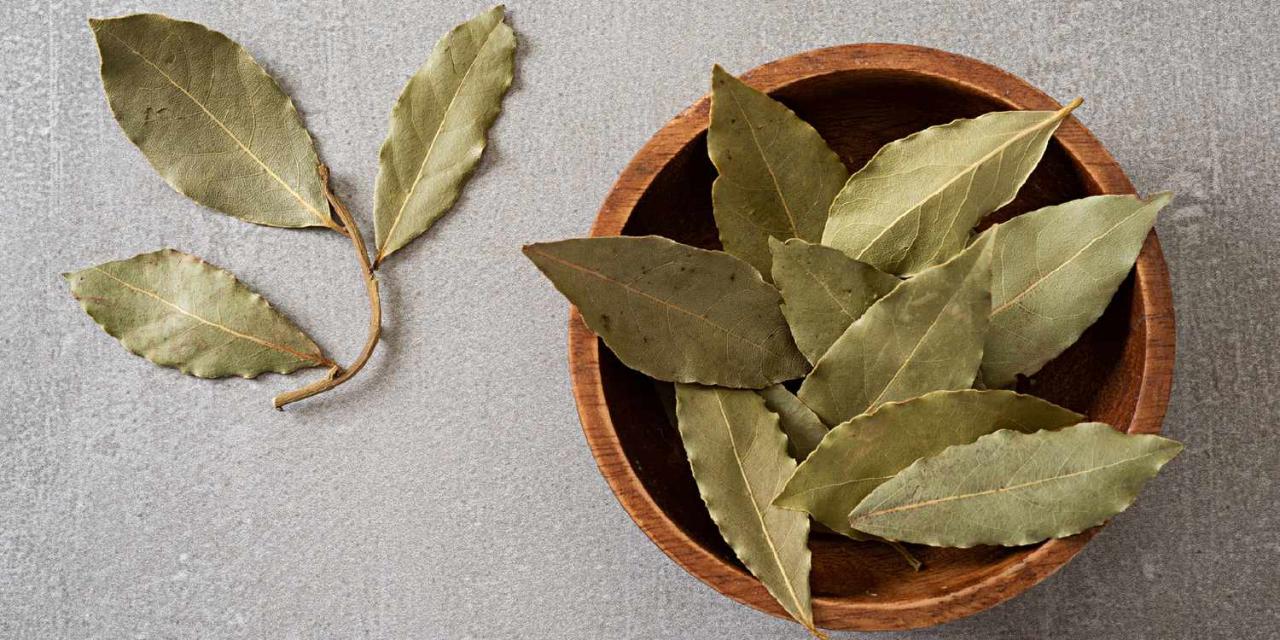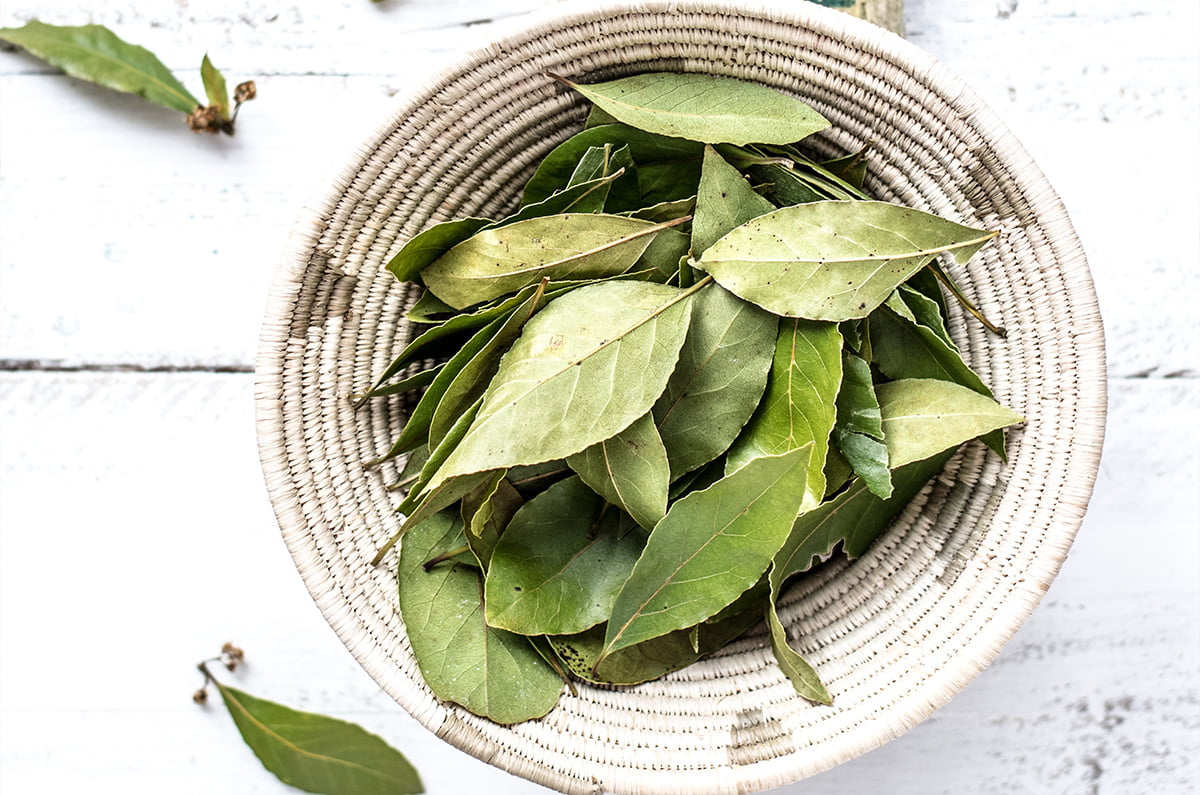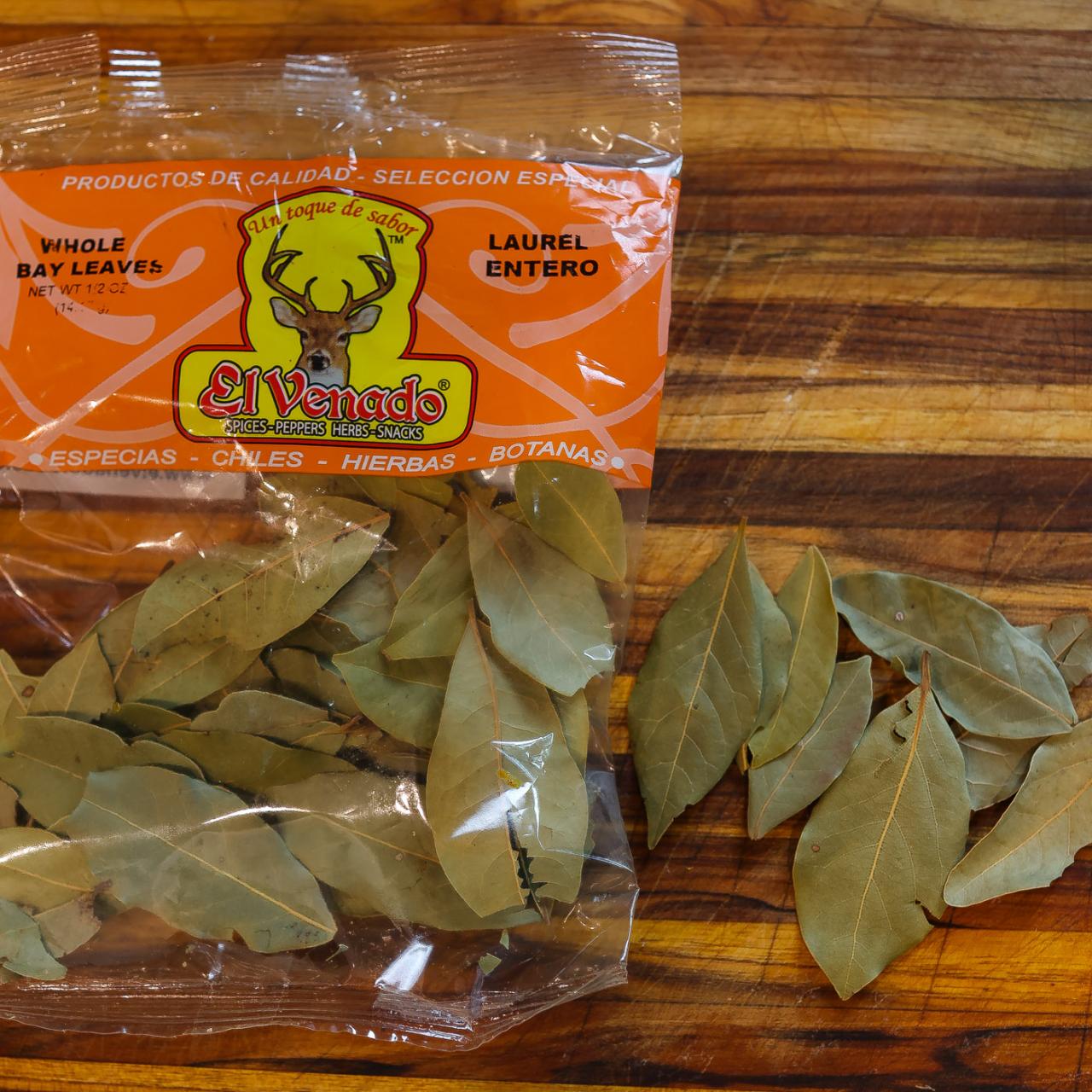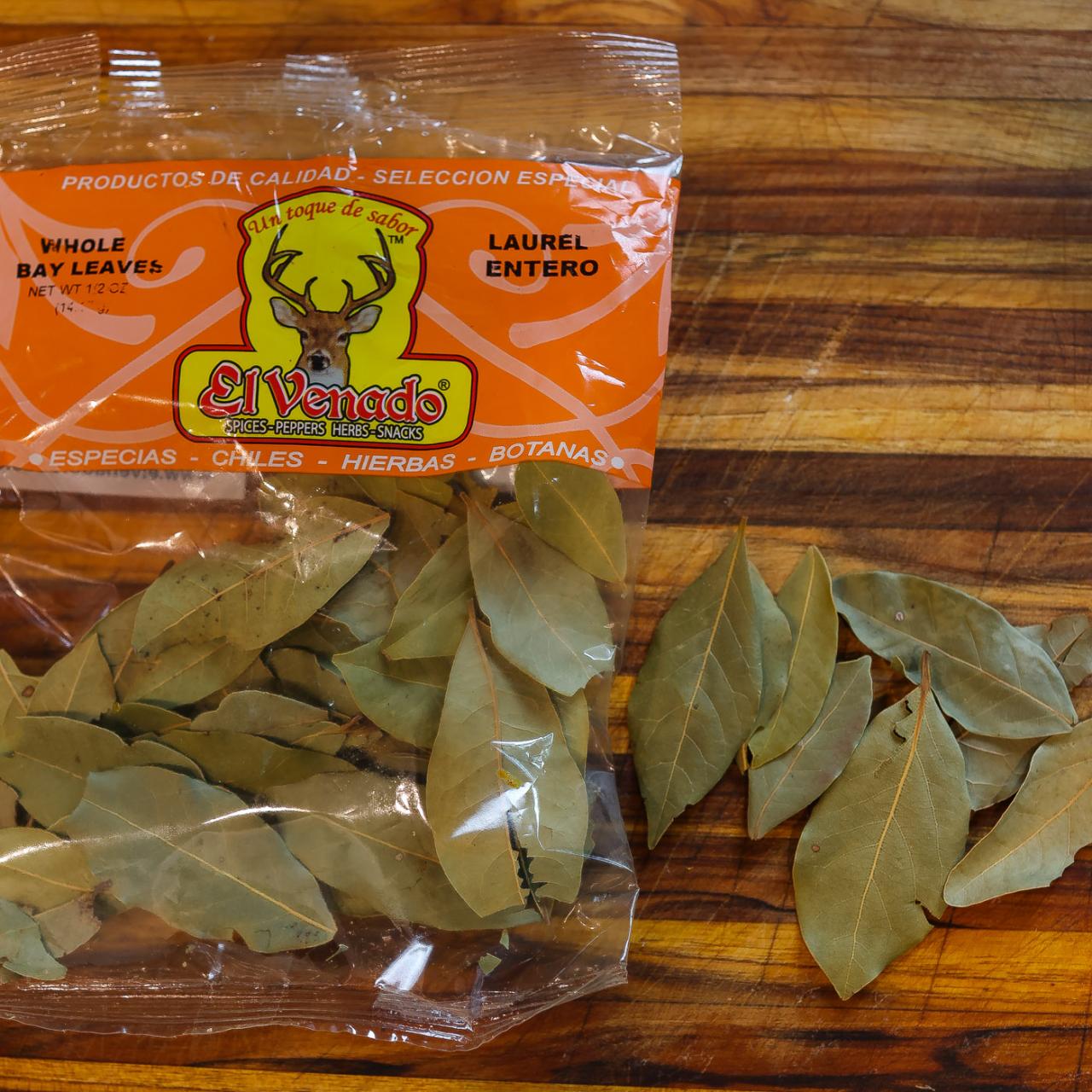The Essential Guide to Bay Leaf Alternatives for Perfect Dishes: Bay leaves, with their distinctive aroma and subtle savory notes, have long been a staple in kitchens worldwide. From traditional Mediterranean stews to aromatic Asian curries, bay leaves add a depth of flavor that elevates dishes to new heights.
But what if you find yourself without a bay leaf? Fear not, for there are numerous substitutes that can deliver similar flavor profiles and enhance your culinary creations.
This comprehensive guide explores the world of bay leaf alternatives, offering a detailed look at various options categorized by their flavor profiles and culinary applications. Whether you’re seeking a herbaceous, citrusy, earthy, or spicy note, we’ve got you covered. From common herbs and spices to unconventional ingredients like smoked paprika and star anise, this guide provides a wealth of information to help you create perfect dishes, even without bay leaves.
The Power of Bay Leaves
Bay leaves, with their distinctive aroma and flavor, are culinary staples in kitchens worldwide. Their unique flavor profile adds depth and complexity to dishes, making them an indispensable ingredient for achieving culinary excellence.
Versatility of Bay Leaves
Bay leaves are incredibly versatile, finding their place in a wide range of cuisines and culinary applications. Their earthy, slightly bitter, and slightly camphoraceous notes complement various flavors, enhancing both savory and sweet dishes. From hearty stews and soups to rich sauces and marinades, bay leaves impart a distinct aroma and depth of flavor that elevates the overall taste experience.
Cultural Significance and Historical Uses
Bay leaves have a rich history and cultural significance, playing a prominent role in culinary traditions across the globe.
- In Mediterranean cuisine, bay leaves are essential in classic dishes like bouillabaisse, a Provençal fish stew, and ratatouille, a vegetable stew.
- In Indian cuisine, bay leaves, known as “tej patta,” are used in curries, biryani, and other aromatic dishes.
- In Chinese cuisine, bay leaves are used in braised dishes, stews, and stir-fries, adding a distinct savory note.
- Historically, bay leaves have been used for medicinal purposes, believed to possess anti-inflammatory and digestive properties.
Exploring Bay Leaf Alternatives
While the bay leaf reigns supreme in many kitchens, its distinctive flavor isn’t always desired. Thankfully, a variety of herbs and spices can step in to fill the void, each offering a unique twist on the classic bay leaf profile.
These alternatives can be categorized by their flavor profiles, making it easier to choose the best substitute for your culinary creations.
Bay Leaf Alternatives Categorized by Flavor Profile
Understanding the flavor profiles of these alternatives allows for a more nuanced approach to substituting bay leaves. This section delves into the most common substitutes and their best applications.
Alternative |
Flavor Profile |
Best Uses |
Notes |
|---|---|---|---|
Thyme |
Earthy, slightly peppery |
Stews, soups, roasts, marinades |
A versatile herb, thyme complements savory dishes and adds a depth of flavor. |
Rosemary |
Piney, slightly bitter, camphoraceous |
Roasted meats, poultry, breads, sauces |
Rosemary’s distinctive flavor pairs well with fatty meats and lends a rustic aroma to baked goods. |
Marjoram |
Slightly sweet, slightly bitter, earthy |
Soups, stews, sauces, vegetables |
Marjoram provides a delicate, herbal flavor that complements both savory and sweet dishes. |
Oregano |
Earthy, slightly pungent, citrusy |
Italian dishes, pizzas, tomato sauces, marinades |
Oregano is a staple in Mediterranean cuisine, adding a distinct flavor to pasta sauces and tomato-based dishes. |
Sage |
Earthy, slightly bitter, savory |
Stuffings, sausages, poultry, pasta |
Sage’s strong flavor pairs well with heavier dishes, especially those featuring pork or poultry. |
Tarragon |
Anise-like, slightly licorice, slightly bitter |
Fish, chicken, egg dishes, sauces |
Tarragon’s unique flavor adds a touch of sophistication to delicate dishes, especially those featuring seafood or chicken. |
Lemongrass |
Citrusy, slightly lemony, slightly grassy |
Thai curries, soups, stir-fries, marinades |
Lemongrass brings a vibrant citrusy flavor to Asian-inspired dishes, adding a refreshing element. |
Cinnamon |
Sweet, warm, slightly spicy |
Stews, soups, desserts, baked goods |
Cinnamon adds a touch of warmth and sweetness to savory dishes and is a staple in many desserts. |
Cloves |
Spicy, warm, slightly bitter |
Pickles, chutneys, curries, baked goods |
Cloves offer a strong, pungent flavor that adds depth to savory dishes and a warming note to desserts. |
Allspice |
Warm, spicy, slightly peppery |
Stews, soups, marinades, baked goods |
Allspice provides a balanced blend of warm and spicy notes, complementing both sweet and savory dishes. |
Herbs and Spices as Bay Leaf Alternatives

While bay leaves impart a distinctive aroma and flavor, numerous herbs and spices can provide similar or complementary notes, offering a diverse range of flavor profiles to elevate your dishes.
Herbs with Similar Flavor Profiles
Many herbs share similar flavor profiles with bay leaves, offering subtle nuances that can enhance a dish’s depth and complexity.
- Thyme:With its earthy, slightly peppery, and slightly sweet flavor, thyme can be used as a direct substitute for bay leaves in many recipes, particularly in savory dishes like stews, soups, and sauces. Its versatility extends to roasted vegetables and meats, adding a warm, comforting note.
- Rosemary:Known for its pungent, piney, and slightly camphoraceous flavor, rosemary complements hearty dishes like roasts, stews, and grilled meats. Its robust flavor can also be used in marinades, sauces, and even baked goods, providing a unique twist.
- Oregano:With its earthy, slightly bitter, and pungent flavor, oregano adds a robust character to Italian dishes, particularly tomato-based sauces, pizzas, and pastas. Its versatility extends to Mediterranean cuisine, adding depth and complexity to stews, soups, and roasted vegetables.
- Sage:Sage boasts a distinctive earthy, slightly peppery, and slightly bitter flavor, making it a popular choice for savory dishes like stuffing, poultry, and pasta sauces. Its unique flavor profile can also enhance roasted vegetables and meats, adding a distinct, aromatic note.
Spice Blends as Bay Leaf Alternatives
Spice blends, with their complex combinations of flavors, can often provide a more nuanced and multifaceted alternative to bay leaves, adding depth and complexity to dishes.
Just as you might seek out alternatives to bay leaves in your culinary endeavors, a successful fall lawn often requires strategic planning. If you’re looking to give your lawn a fresh start, consider the timing of your seeding efforts, as outlined in this comprehensive guide, September Grass Seeding Success: What You Need to Know.
With proper timing and care, your lawn will be the envy of the neighborhood, just like your perfectly seasoned dishes.
- Curry Powder:This vibrant blend of spices, typically containing turmeric, cumin, coriander, and chili powder, offers a warm, earthy, and slightly spicy flavor profile. It’s widely used in Indian cuisine, adding depth and complexity to curries, stews, and rice dishes.
- Garam Masala:This blend of spices, typically containing black peppercorns, cloves, cinnamon, cardamom, and cumin, provides a warm, aromatic, and slightly sweet flavor profile. It’s commonly used in Indian and Pakistani cuisine, adding depth and complexity to curries, stews, and rice dishes.
- Chinese Five Spice:This blend of spices, typically containing cinnamon, cloves, fennel seeds, star anise, and black peppercorns, offers a warm, aromatic, and slightly sweet flavor profile. It’s widely used in Chinese cuisine, adding depth and complexity to stir-fries, braises, and marinades.
Citrus and Other Fruit Peels

Citrus peels, particularly those from lemon, orange, and lime, offer a vibrant and aromatic alternative to bay leaves, adding a distinct citrusy note to dishes. The peels’ flavor profiles vary, ranging from the bright acidity of lemon to the sweet and tangy essence of orange, making them suitable for a wide array of culinary creations.
Citrus Peels as Bay Leaf Alternatives
Citrus peels can be used in various ways to enhance the flavor of dishes, often replacing bay leaves in stews, soups, sauces, and marinades.
- Lemon Peel:Known for its bright acidity and refreshing zest, lemon peel is a versatile addition to dishes. It complements seafood, poultry, and vegetable dishes, adding a citrusy kick.
- Orange Peel:With its sweet and tangy flavor, orange peel is a popular choice for enhancing the taste of pork, duck, and desserts. Its aroma adds a warm and inviting note to baked goods and sauces.
- Lime Peel:Lime peel, characterized by its sharp and tangy flavor, is a staple in Mexican and Southeast Asian cuisine. It pairs well with fish, chicken, and spicy dishes, adding a zesty twist.
Using Other Fruit Peels, The Essential Guide to Bay Leaf Alternatives for Perfect Dishes
While citrus peels are commonly used as bay leaf substitutes, other fruit peels can also add unique flavor profiles to dishes.
- Apple Peel:Apple peel, with its subtle sweetness and mild acidity, can be used in apple-based dishes, like apple pie or apple sauce, to enhance the apple flavor. It can also be used in pork dishes, adding a touch of sweetness and complexity.
- Pear Peel:Pear peel, similar to apple peel, possesses a delicate sweetness and subtle acidity. It can be used in pear-based dishes, like pear tarts or pear chutney, to intensify the pear flavor. It can also add a touch of sweetness and complexity to poultry dishes.
Creative Alternatives
While herbs and spices offer a wide range of flavor possibilities, venturing beyond the conventional can unlock exciting culinary dimensions. This section explores unconventional alternatives that bring unique depth and complexity to dishes.
When seeking alternatives to bay leaves in your culinary creations, consider the unique flavors and aromas offered by herbs like rosemary, thyme, and sage. For a deeper understanding of plant propagation, delve into the world of gardening with The Essential Guide to Rodgers Plant Propagation , where you’ll discover techniques for cultivating your own herb garden.
Once you’ve mastered the art of propagation, you can experiment with various bay leaf substitutes to elevate your dishes with fresh, aromatic flavors.
Smoked Paprika
Smoked paprika, a staple in Spanish cuisine, adds a distinct smoky, earthy flavor with hints of sweetness. Its versatility makes it an excellent substitute for bay leaves in various dishes.
“Smoked paprika’s rich flavor profile can be used to elevate stews, soups, and braises, lending them a depth that bay leaves alone cannot achieve.”
- Spanish Paella:Smoked paprika is a key ingredient in paella, where its smoky flavor complements the seafood and rice. Replacing bay leaves with smoked paprika in paella recipes can add a nuanced smoky dimension to the dish.
- Hungarian Goulash:This hearty stew relies on smoked paprika for its signature flavor. Substituting bay leaves with smoked paprika in goulash recipes will amplify the dish’s smoky and savory notes.
Star Anise
Star anise, a spice with a licorice-like flavor and a slightly sweet aroma, adds a unique dimension to savory dishes. Its distinctive flavor can be a compelling alternative to bay leaves, particularly in Asian-inspired recipes.
- Vietnamese Pho:Star anise is a key ingredient in pho, where its licorice-like flavor infuses the broth, creating a complex and aromatic base for the noodle soup.
- Chinese Five Spice Powder:Star anise is a component of Chinese five spice powder, a blend of spices used in various dishes, including braised meats and stir-fries. Using five spice powder in place of bay leaves can add a nuanced and complex flavor profile to these dishes.
Dried Mushrooms
Dried mushrooms, particularly varieties like shiitake and porcini, offer a rich, umami-packed flavor that can be used to enhance the depth of savory dishes.
- Mushroom Risotto:Dried mushrooms are often used in risotto, where their concentrated flavor adds depth and complexity to the creamy rice dish. Substituting bay leaves with dried mushrooms in risotto recipes can create a more pronounced and savory flavor profile.
- Mushroom Broth:Dried mushrooms can be used to make a flavorful broth that can be used as a base for soups, stews, and sauces. Using mushroom broth instead of water in recipes that traditionally call for bay leaves can add a distinct umami flavor to the dish.
Bay Leaf Alternatives in Action: The Essential Guide To Bay Leaf Alternatives For Perfect Dishes
Now that we’ve explored the world of bay leaf substitutes, let’s see how these alternatives shine in real-world recipes. Each alternative offers a unique flavor profile and texture, enriching the culinary experience.
Bay Leaf Alternatives in Different Dishes
Bay leaf alternatives can be seamlessly incorporated into various recipes, adding depth and complexity to the flavors. Let’s explore some examples:
“For a hearty lentil soup, swap out the bay leaf for a sprig of fresh thyme. Thyme’s earthy, slightly peppery notes complement the lentils beautifully, creating a warm and comforting soup.”
“In a classic tomato sauce, a pinch of dried oregano can replace the bay leaf. Oregano’s herbaceous aroma and slightly bitter notes enhance the tomato’s sweetness, resulting in a richer and more complex sauce.”
“For a vibrant and aromatic chicken stew, try using a few slices of lemon peel instead of a bay leaf. The citrusy notes of the lemon peel infuse the stew with a bright and refreshing flavor.”
“To elevate the flavor of a simple vegetable broth, add a few pieces of star anise. Star anise’s licorice-like aroma adds a unique and exotic touch to the broth, creating a complex and flavorful base for soups and stews.”
Closing Notes

By exploring the diverse world of bay leaf alternatives, you can unlock a new dimension of flavor in your cooking. From traditional herbs and spices to creative substitutes, the options are endless. Experiment with different alternatives, embrace their unique characteristics, and discover the perfect match for your culinary creations.
Whether you’re a seasoned chef or a home cook, this guide provides the knowledge and inspiration to elevate your dishes and expand your culinary horizons.
Helpful Answers
Are bay leaf alternatives always a perfect substitute?
While bay leaf alternatives can provide similar flavor profiles, they may not always be a perfect match. Some alternatives might offer a more pronounced flavor or a different nuance compared to bay leaves. It’s important to experiment and adjust the amount of alternative used based on your personal preference and the specific recipe.
Can I use fresh herbs instead of dried herbs as bay leaf alternatives?
Yes, you can use fresh herbs as substitutes for dried herbs. However, keep in mind that fresh herbs have a more potent flavor than dried herbs. Use about three times the amount of fresh herbs compared to dried herbs for a similar flavor intensity.
How long should I cook bay leaf alternatives?
The cooking time for bay leaf alternatives varies depending on the ingredient. Most herbs and spices require a shorter cooking time than bay leaves, while citrus peels and other fruit peels might need a longer simmering time to infuse their flavors.
